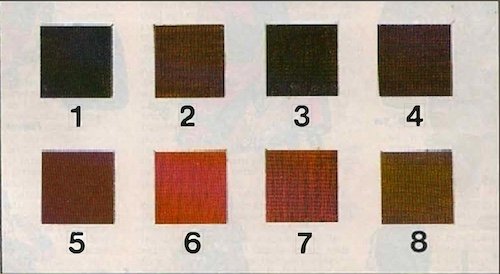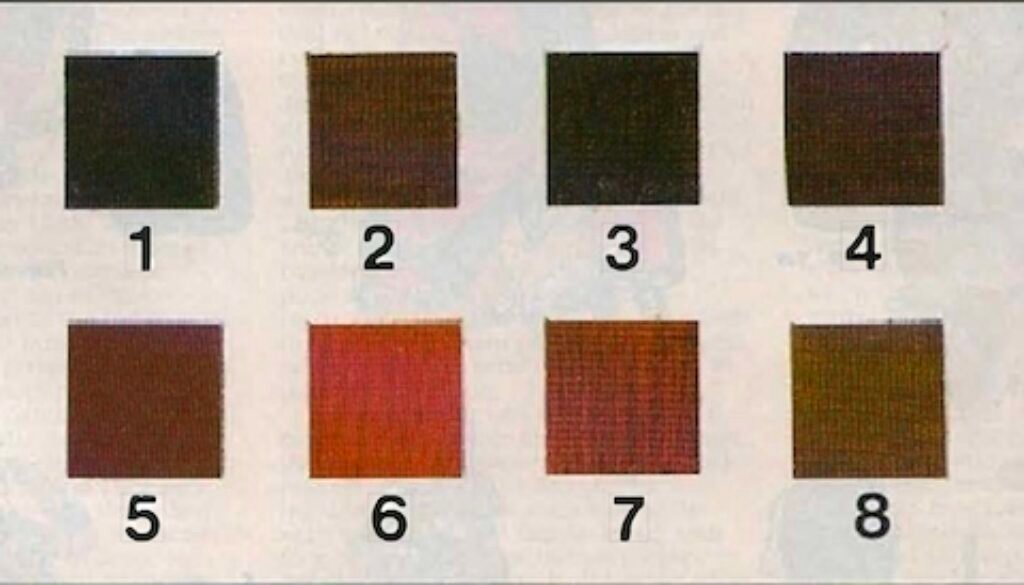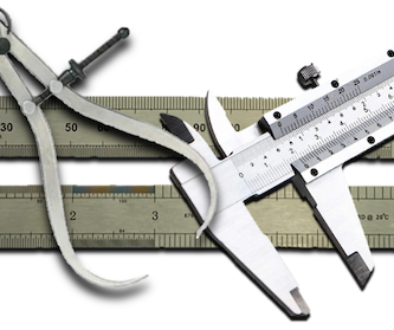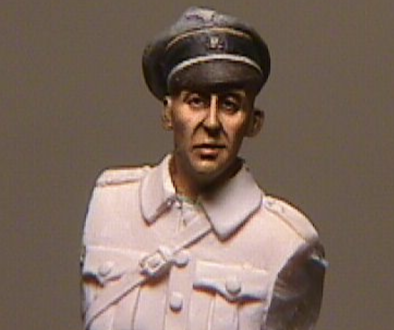OIL PAINTING FOR BEGiNNERS Series
by Graham Dixey
Continuing the popular series for beginners to the hobby, looks at methods of getting the varying shades of Indian flesh tones correct.
The military histories of Britain and India are inextricably interwoven as anyone who even skims the surface of the subject will soon discover. There are times when they have been on opposite sides – as in the 1857 Mutiny and on the north-west frontier – and times when they fought shoulder to shoulder.
During two world wars, Indian soldiers fought in the cause of Empire, in the First world War in the cold and mud of the trenches. far from the hot and dusty climate of their homeland. It is quite likely then that the military modeller will want at some time to add one or more Indian army figures to his collection: some people make quite a study of them. painting up a collection of the various infantry and cavalry regiments.
And very colourful figures they are too. Colour is of course the operative word what colour do we paint their flesh in? As I seem to recall saying in the last article on painting dark skin tones. It ls easy to categorise such skin colours as -brown- which doesn’t help the painter very much. So, as in the case of the dark skin tones, we shall have to be a little more searching in order to determine just what brown we need to get.
It Isn’t just a question of having several alternative browns in order to avoid monotony in ones’ collection. The skin tone of people from Indian varies quite a bit according to which part of India they come from. It is interesting to note that, in general, those from the far north of India can have quite light skin toned, while those from the south usually have very dark skins. Sri Lankan people, formerly Ceylon. are often very dark skinned.
Sources of Inspiration
To aid me in concocting some suitable mixes I studied the works of a variety of contemporary 19th century artists. professional and amateur. and discerned some sort of pattern for what l might refer to as “predominant types” in Indian army service, men from Bengal. the Punjab, Bombay and Madras.
I thought that If I could make up some flesh colours that approximated to these four it would suit most purposes. So that is what I have done. I have also studied the real thing in a matter of detail. (Specially with regard to hair colour. lips and other facial details.
Models for the Army
Until I started to put this article together I didn’t realise that the modeller was so poorly serve d in respect of such a significant subject. If we are thinking in terms of Indian soldiers as opposed to British officers then there aren’t that many makers with such figures available.
The two that you see here in Figure 1 are from Hussar Military Miniatures and Positive Figurines. The former has a good range of the larger figure in 90mm: the latter I believe has just this one figure. In terms of smaller scale figures, the largest range currently available is in the Rose Miniatures catalogue; these are 54mm figures. In the same scale the other makcr with a good number of Indian figures is Alan Calon’s Squadron Range. If any maker reads this and also has Indian figures available (model soldiers a.s opposed lo toy soldiers), I shall be happy to update this information in a later article.
The above reference was to “ronde bosse” figures. If you happen to be a flats painter. then you will find a good range of figures in the -Indian Mutiny- series obtainable from Western Miniatures of Bristol. The German maker Karl Werncr Rieger also has some 16th century Indians and including several splendid elephants. From the same maker comes a Sikh Parade or 1839 also with elephants. Gurkhas of 1845. Madras army of 1850, Sepoys of 1760 and various other Indian figures.
What Brown?
In addition to the two figures that you see opposite (Figures 2 and 3). I have given colour patches. In Figure 4, of a variety of browns available in the Talens Rembrandt range. There are eight as you can see. all of which are capable of producing the required flesh colours with the addition of some yellow ochre. You don’t have to dash out and buy all of these paints. of course. In fact. you will almost certainly have some already. Probably burnt umber and burnt Sienna. From these I have produced six mixtures (from an infinite possible range) as follows. In Figure 5.
(A) PUNJABIS Burnt Sienna & yellow ochre Plus brown ochre.
(B) BOM8AY: Burnt umber & yellow ochre Plus burnt Sienna.
(C) MADRAS (1): Burnt sienna & yellow ochre
(D) MADRAS (2): Flesh Ochre & yellow ochre
(E) BENGALIS (1): Burnt sienna & yellow ochre
(F) BENGALIS (2): Burnt umber &yellow ochre

Fig. 1. Fig. 2.
The Figures
Have Chosen And Painted Especially For This Feature Two Quite Different Flesh “Types”.
The 27th Light Cavalry Trooper (Figure 2) Is From Madras And His Flesh Is Painted In The Burnt Sienna/Yellow Ochre Mixture. You Will Note That This Particular Mixture Gives The Reddish Tones Often Discerned In Contemporary Paintings Of Such Soldiers. The Overall Skin Tone Is Fairly Light, Especially When Compared With The Other Figure.
After Applying The Basic Flesh Coat. It Was Well Brushed With A Largish Dry Brush To Remove Surplus Paint: As You May Have Discovered This Also Picks Up Some Of The Oil And Reduces The Gloss.
Highlighting Was Carried Out Using A Mixture Of Yellow Ochre And White. I Wanted To Create Very Positive Contrasts In The Face So I Painted In The Shadows With A Mixture Of Winsor Violet And Ivory Black.
This Was Applied Particularly In The Eye Sockets And Down The Sides Of The Nose. The Lips Are A Deep Pink Colour And This Was Mixed Up From Flesh Ochre And White. This Is Not The Only Possibility. Of Course. Aim For A Deep Pink That Borders On Carmine.
The Irises Of The Eyes Can Be A Mld Brown, Say Brown Ochre With Pupils In Ivory Black. The Hair, (Including Beard, Moustache And Eyebrows) Was Painted Solely In Ivory Black – No Highlighting Was Used At All And Obviously No Shading!
With Dark Eyes, There Is Always The Chance Of Creating A “Staring” Effect. This Can Be Reduced By Closing 1he Eye Somewhat.
Draw The Upper Lid Clown Over The Eyeball And Give Il A Touch Of Highlight Colour. Line The Eyes, Top And Bottom, With The Finest Of Lines In Ivory Black. I Kecp A Special Brush Solely For This Type Of Work.
Lt Is What Is Known As A Sable “Rigger” And For The Record The One I Have Is A Pro Arte Series 2A Kolinsky Sable. S12e 3/0. To Use It In This Way For Any Fine Lining, I Break A Rule And Use White Spirit As The Medium. I Add Enough To The Spot Of Ivory Black On My Palette To Make It Quite Watery.
I Then Draw The Brush Through This Very Thin Paint And Then Draw The Lip Of The Brush Along The Line Of The Eyelid. Because The Paint Is So Fluid It Draws A Fine, Continuous Line Without Running Out Of Paint Half Way. It Is In Effect A Watercolour Technique Applied To Oils.
The Sepoy Mutineer (Figure 3) Is From Bengal And His Flesh Is Painted In The Burnt Umber/Yellow Ochre Mixture.
It is shaded with burnt umber and highlighted with a mixture of yellow ochre and white. The irises of the eyes were painted with the same mixture as for the flesh and the pupils were tiny dots of ivory black.
The lips were painted as for the Madras trooper ivory black was used for the hair once more with the difference that it was highlighted slightly by dry-brushing it with burnt umber once the hair colour was dry.
The skin colour is quite different between the two figures. That of the Bengali has a much browner bias to It: the red tone is absent. The overall result is of a much swarthier person. These differences arc important.

Fig. 3
Try to develop an awareness of these essential differences between various skin colours even if the subjects concerned come from the same country. India is. after all. rather a large place! To classify all such skin colours as just “brown” would be totally inaccurate apart from being insulting,
It is shaded with burnt umber and highlighted with a mixture of yellow ochre and white. The irises of the eyes were painted with the same mixture as for the flesh and the pupils were tiny dots of ivory black.
The lips were painted as for the Madras trooper ivory black was used for the hair once more with the difference that it was highlighted slightly by dry-brushing it with burnt umber once the hair colour was dry.
The skin colour is quite different between the two figures. That of the Bengali has a much browner bias to It: the red tone is absent. The overall result is of a much swarthier person. These differences arc important. Try to develop an awareness of these essential differences between various skin colours even if the subjects concerned come from the same country. India is. after all. rather a large place! To classify all such skin colours as just “brown” would be totally inaccurate apart from being insulting,

Fig. 4

Fig. 5



